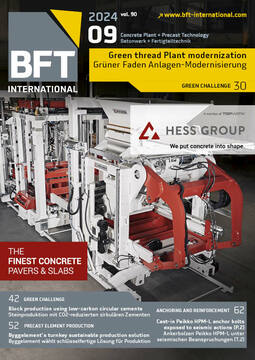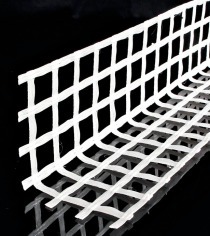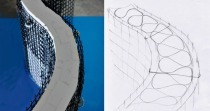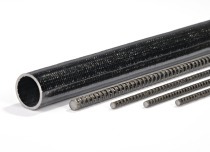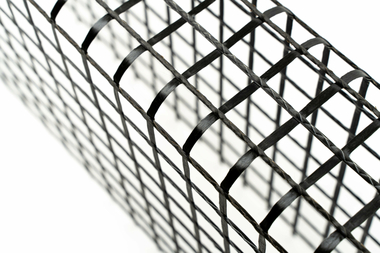Sustainable building with non-metallic reinforcement
The widely used reinforced-concrete construction method is extremely resource- and energy-intensive and produces significant CO2 emission. Non-metallic reinforcement enables construction of slender concrete elements with high load-bearing capacity, low self-weight and long durability – also under extreme environmental conditions. This contributes to sustainable building since less construction material is required and less emission occurs during production of the construction materials. This is entirely in line with the objectives of 3P of the CHT Group. Sustainability at CHT means that management and objectives are based on all dimensions of sustainability – People, Planet and Performance.
CHT has recognized the future trend of textile-reinforced concrete centered on the interface between matrix and fiber. To most efficiently make use of textiles, the interfaces of the fiber are especially prepared. To achieve this benefit, CHT has always made use of aqueous technologies – for more sustainability, occupational safety and environmental protection.
Corrosion excluded thanks to non-metallic reinforcement
The impregnations available under the brand name Tecosit greatly contribute to safe and efficient manufacture of textile mesh. Tecosit CC 7021 increases the durability of AR fiberglass by enabling reduced reduction factors (Fig. 1). This technique with fiberglass mesh reinforcement also reduces the number of reinforcement layers required.
Tecosit CC 1000 for carbon ensures thermoformability of the hardened polymer dispersion. This enables manufacture with minimal effort of three-dimensional geometry (e.g., shear grating) of the surface of textiles. More complex geometries are individually available from specialized companies.
CHT Tecosit technology has already been implemented for pioneering structures and will serve flagship projects for many new ventures. Carbon-textile technology used for newbuilds and existing structures especially contributes to reduced CO2 emission. In May of 2024, the city of Stuttgart in Germany erected a wooden carbon-concrete bridge after 4 years of planning. The innovative construction with carbon-concrete deck and a timber girder construction enabled resource-optimized construction. The required carbon reinforcement, outfitted with Tecosit CC 1000, comprised around 4,000 m².
Costs could be saved because crane use was largely unnecessary due to the low mass per unit area of the textile and because meshing was implemented with one-way fixed cable ties. In comparison to conventional construction, fewer maintenance and rehabilitation measures are expected for the bridge, since reinforcement corrosion – the main reason for rehabilitation – is not expected due to the use of non-metallic reinforcement.
Committed Partner in the Carborefit Consortium
The CHT Group, committed partner in the Carborefit Consortium, offers solutions for retroactive reinforcement of structural components that have already proved successful. Generally valid solutions are covered by general national technical approvals and complex special solutions, with individual approval: such as the rehabilitation of the BAB 648 bridge across the Nidda River.
Further projects in the implementation phase relate to garden and landscape construction, reinforcement of concrete box girders, mineral sealing systems, as well as newbuilds and precast construction.
Water-based impregnations promote the development and use of innovative textile technologies in composite construction with mineral matrices. Following years of stagnation and reservations regarding non-metallic systems in conventional construction, there is now a DafStB code of practice. Planners have a tool that enables reliable images and calculations for customized applications.
At the same time, awareness of sustainability is gaining in significance.



